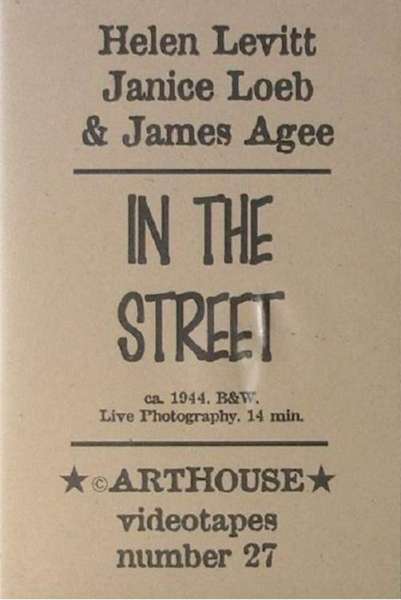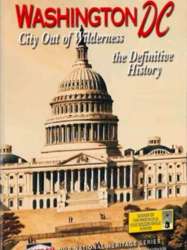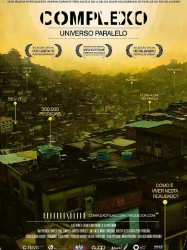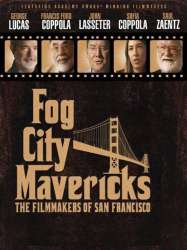In the Street est un film de genre Documentaire réalisé par James Agee
In the Street (1948)

Si vous aimez ce film, faites-le savoir !
In the Street is a 16-minute documentary film released in 1948 and again in 1952. The black and white, silent film was shot in the mid-1940s in the Spanish Harlem section of New York City. Helen Levitt, Janice Loeb, and James Agee were the cinematographers; they used small, hidden 16 mm film cameras to record street life, especially of children. Levitt edited the film and, subsequent to its first release, added a piano soundtrack composed and performed by Arthur Kleiner.
The film is generally considered as an extension of Levitt's (now famed) street photography in New York City, and Levitt subsequently re-used the title, In the Street, for a volume reproducing her photographs. Loeb was a painter and photographer. James Agee was a noted writer; both Loeb and Agee subsequently collaborated with Levitt on a second film, The Quiet One (1948).
Manny Farber summarized the film at the time, "The movie, to be shown around the 16mm circuit, has been beautifully edited (by Miss Levitt) into a somber study of the American figure, from childhood to old age, growing stiffer, uglier, and lonelier with the passage of years." The artist Roy Arden recently summarized the film somewhat differently, "In The Street is reportage as art. It reports the facts, but for their useless beauty above all. While it could be argued that the film tells us how working class residents of Spanish Harlem lived in the 30’s and 40’s - how they looked and behaved, the addition of expository narration could have told us so much more. Statistics and other facts could have helped us put what we see into context and multiplied the use-value of the film. The absence of narration or other texts proves the artist's intent that we are intended to enjoy the film as a collection of beautiful appearances."
In 2006, In the Street was selected for preservation in the United States National Film Registry by the Library of Congress as being "culturally, historically, or aesthetically significant". A videotape version of the film was released in 1996, but is apparently out of print.
^ "Films Selected to the 2006 National Film Registry". The Library of Congress. September 8, 2008. Retrieved 2010-10-09.
^ Farber, Manny (1998). Negative space: Manny Farber on the movies. Da Capo Press. pp. 45–46. ISBN 978-0-306-80829-6. This book is a collection of Farber's reviews; the original review appeared in The Nation.
^ Arden, Roy (2002). "Useless Reportage - Notes on Helen Levitt’s In the Street". Afterall (6). Retrieved 2010-10-09. Arden also notes that In the Street was an influence on Stan Brakhage's and Andy Warhol's filmmaking.
^ From 1939 through 1967, Arthur Kleiner was the musical director for the film department of the New York Museum of Modern Art. He composed and performed piano scores for many silent films; his collection of 700 musical scores for silent films, which includes his own score for In the Street, is now archived at the University of Minnesota. See "Arthur Kleiner Collection". University of Minnesota. December 15, 1998. Retrieved 2010-10-10.
^ Levitt, Helen (1987). In the Street: Chalk Drawings and Messages, New York City, 1938-1948. Duke University Press. ISBN 0-8223-0771-5.
^ "Films Added to National Film Registry for 2006" (Press release). The Library of Congress. December 27, 2006. Retrieved July 22, 2009.
^ In the Street (Videotape). New York: Arthouse. 1996.
^ "International Center of Photography - Store - In the Street". Retrieved 2010-10-07.
Commentaires
Postez un commentaire :
Suggestions de films similaires à In the Street
Il y a 0 films avec le même réalisateur, 8968 ayant les mêmes genres cinématographiques, 373 films qui ont les mêmes thèmes, pour avoir au final 70 suggestions de films similaires.Si vous avez aimé In the Street, vous aimerez sûrement les films similaires suivants :

Legacy (2000)
, 1h30Origine Etats-Unis
Genres Documentaire
Thèmes La famille, Documentaire sur une personnalité, Documentaire sur les villes
Note67%






City Out of Wilderness (1974)
, 28minutesOrigine Etats-Unis
Genres Documentaire
Thèmes Documentaire historique, Documentaire sur les villes
Note24%






J'irai dormir à Hollywood (2008)
, 1h40Réalisé par Antoine de Maximy
Origine France
Genres Documentaire
Thèmes Documentaire sur les villes, Documentaire de voyage
Acteurs Antoine de Maximy
Note72%





Antoine de Maximy part découvrir les États-Unis : ses grandes routes, ses paysages, ses mythes, ses grandes villes, ses communautés, ses stars hollywoodiennes mais également ses anonymes.

Complexo - Universo Paralelo (2011)
, 1h20Origine Portugal
Genres Documentaire
Thèmes Documentaire sur les villes
Note65%






Trumbo (2007)
, 1h36Réalisé par Peter Askin
Origine Etats-Unis
Genres Documentaire, Historique
Thèmes Film sur un écrivain, Documentaire sur le monde des affaires, Documentaire sur le cinéma, Documentaire historique, Documentaire sur une personnalité, Documentaire sur les villes, Politique
Acteurs Dalton Trumbo, Joan Allen, Michael Douglas, Liam Neeson, Paul Giamatti, Josh Lucas
Note73%





En se concentrant sur la vie de Dalton Trumbo (1905-1976), ce film examine les effets sur les individus et les familles de la poursuite par le Congrès des communistes d'Hollywood après la Seconde Guerre mondiale. Trumbo était l'un des nombreux écrivains, réalisateurs et acteurs qui ont invoqué le premier amendement en refusant de répondre aux questions sous serment. Ils ont été mis sur la liste noire et emprisonnés. Nous suivons Trumbo en prison, en exil au Mexique avec sa famille, dans la pauvreté, dans le rejet public de ses enfants, dans ses écrits sous d'autres noms, et dans une éventuelle mais incomplète réhabilitation. Des acteurs lisent ses lettres ; ses enfants et ses amis se souviennent et commentent. Des photos d'archives, des films d'actualités et des interviews ajoutent de la texture.

Of Time and the City (2008)
, 1h12Réalisé par Terence Davies
Origine Royaume-uni
Genres Documentaire, Historique
Thèmes Documentaire sur le monde des affaires, Documentaire sur le cinéma, Documentaire sur une personnalité, Documentaire sur les villes, Documentaire autobiographique
Acteurs Terence Davies
Note71%





La ville de Liverpool dans les années 50 et 60.

Wattstax (1973)
, 1h38Réalisé par Mel Stuart
Origine Etats-Unis
Genres Comédie musicale, Documentaire, Musical
Thèmes La musique, Documentaire sur la musique, Documentaire sur une personnalité, Documentaire sur les villes, Musique
Acteurs Richard Pryor, Melvin Van Peebles, Isaac Hayes, Ted Lange, Erik Kilpatrick
Note76%





Le Woodstock noir, concert d'anthologie donné en août 1972 au Watts Stadium de Los Angeles à la mémoire des émeutes noires de 1965 avec Isaac Hayes, Albert Kint, the Barkays, Little Milton, Rufus Thomas.

L'Esprit de Mopti (1999)
, 45minutesOrigine France
Genres Documentaire
Thèmes Documentaire sur les villes
A la rencontre du désert et des savanes, à l'est du Mali, Mopti est une grande ville musulmane et un carrefour commercial sur le fleuve Niger. Chaque jeudi, des commerçants représentant diverses ethnies s'y donnent rendez- vous pour le marché. A Mopti, on parle toutes les langues du Mali et on pratique encore le troc selon une tradition ancienne. C'est cet "esprit de mopti", fait de tolérance, d'humour, de respect de l'autre, d'échange et de commerce que ce film décrit à travers 5 personnages représentatifs : un Dogon, un Bozo, un berger Peul, un éleveur Tamasheq et un intermédiaire, Bella, fils de la ville et charretier.

Fog City Mavericks (2007)
Origine Etats-Unis
Genres Documentaire
Thèmes Documentaire sur le monde des affaires, Documentaire sur le cinéma, Documentaire sur les villes
Acteurs Francis Ford Coppola, Miloš Forman, John Lasseter, George Lucas, Steven Spielberg, Frank Darabont
Note74%






Katrina (2006)
, 4h15Réalisé par Spike Lee
Origine Etats-Unis
Genres Documentaire
Thèmes Documentaire historique, Documentaire sur les villes, Film catastrophe
Acteurs Harry Belafonte, Terence Blanchard
Note85%





The film focuses on the changed lives of New Orleans residents after Hurricane Katrina hit. The film shows residents in the midst of disaster dealing with death, devastation and disease. Spike Lee said about the film:
 Connexion
Connexion